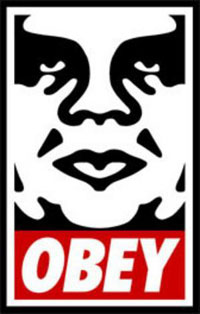Street Artist vs AP: Fair Use or Violation?
 Street artist Shepard Fairey used an Associated Press (AP) photograph as the basis of his famous artistic treatment of then-Presidential candidate Barack Obama. That fact is not in dispute.
Street artist Shepard Fairey used an Associated Press (AP) photograph as the basis of his famous artistic treatment of then-Presidential candidate Barack Obama. That fact is not in dispute.
The AP contacted Mr. Fairey in an attempt to secure credit and compensation. Although the AP has not started formal legal proceedings against Fairey, Fairey decided to strike first by suing the AP for infringement of Fair Use.
A quick review of the pertinent law, Section 107 of Title 17 of the U.S. Code dealing with copyright law:
Notwithstanding the provisions of sections 106 and 106A, the fair use of a copyrighted work, including such use by reproduction in copies or phonorecords or by any other means specified by that section, for purposes such as criticism, comment, news reporting, teaching (including multiple copies for classroom use), scholarship, or research, is not an infringement of copyright. In determining whether the use made of a work in any particular case is a fair use the factors to be considered shall include—
(1) the purpose and character of the use, including whether such use is of a commercial nature or is for nonprofit educational purposes;
(2) the nature of the copyrighted work;
(3) the amount and substantiality of the portion used in relation to the copyrighted work as a whole; and
(4) the effect of the use upon the potential market for or value of the copyrighted work.
The fact that a work is unpublished shall not itself bar a finding of fair use if such finding is made upon consideration of all the above factors.
One could make the obvious arguments that the derived work falls under the idea of comment, that it was used for non-profit purposes, and that there was no demonstrable reduction in the value of the original work.
According to an article in the Law Blog of the Wall Street Journal:
Wendy Seltzer, a law professor at American University and a fellow at Harvard’s Berkman Center for Internet & Society said she doesn’t think much of the AP’s claim. “Most of what is in the image is the un-copyrightable image of President Obama,’’ she said. And the fact that Fairey’s product was political is important. “Commentary is already a recognized category of fair use,” she said. “So political commentary is given an added bump on the fair use scale . . . If someone had to tried to appropriate that image for a news story without paying the AP, that would have been unfair. But making it into a poster commentary on the election campaign, I think that is not something the copyright monopoly should cover.’’
 I am not aware of any direct profit Fairey has made off the Obama piece, unless you include the benefit of publicity that work has given him, including USA Networks “Character Approved” promotional dribble.
I am not aware of any direct profit Fairey has made off the Obama piece, unless you include the benefit of publicity that work has given him, including USA Networks “Character Approved” promotional dribble.
Apparently while promoting Fairey as someone with character for simply producing a poster for the guy who won the election (huh?), USA Networks was unaware of the arrest warrants for Fairey for his omnipresent André-the-Giant-inspired “Obey” stencil graffiti. Boston police arrested Fairey last Friday at the Institute of Contemporary Art in Boston at the opening of a retrospective of his work.
I look forward to the estate of André the Giant going after Shepard Fairey. The downturn in the economy has left too many lawyers idle.

 The future of digital experiences will be built by strategists who grasp the full array of emerging business, social, and technical models. Specialties in user experience, branding, application design, and data science are laying the foundation for richer user experiences and business models breakthrough products and revenue based marketing.
The future of digital experiences will be built by strategists who grasp the full array of emerging business, social, and technical models. Specialties in user experience, branding, application design, and data science are laying the foundation for richer user experiences and business models breakthrough products and revenue based marketing.
Comments are closed.